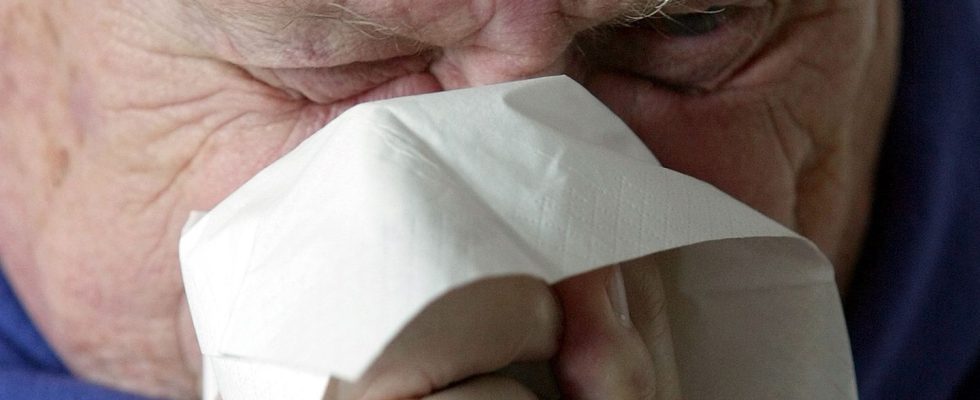COLD WAVE
Corona, RSV and flu: These graphics show who is currently getting sick
The incidence of acute respiratory diseases in the population over 60 years of age increased significantly compared to the previous week (symbolic image)
© Roberto Pfeil / Picture Alliance
Corona and other cold pathogens make life difficult for many people. Data from the Robert Koch Institute make it clear which parts of the population are hit particularly hard by the wave of colds.
Judging by the RKI weekly report on the situation of acute respiratory diseases in Germany, there is no sign of any weakening of the current situation even before the holidays Cold wave in sight. The activity of acute respiratory diseases (ARE) in the population increased overall and in all age groups in the 49th calendar week (December 4th to December 10th, 2023) compared to the previous week.
The high ARE activity results from the high number of COVID-19 illnesses and the colds caused by rhinovirus infection that are typical of this time of year. As the RKI announced last week, RSV activity is also increasing worryingly. This RSV wave continues this week. Children under two years of age are particularly affected by hospital admission with RSV infection.
According to the RKI, influenza activity also increases in the 49th calendar week. But one could not yet speak of a flu wave. So far, school-age children and young adults have primarily been affected.
Activity of acute respiratory diseases increased in all age groups
The activity of acute respiratory diseases in the population was around 9,500 ARE per 100,000 inhabitants in the 49th week of 2023. In the previous week the incidence was 8,300 ARE per 100,000 inhabitants. The values increased in all age groups compared to the previous week. The numbers rose particularly sharply among adults over 15 years of age.
The current ARE incidence corresponds to a total of around 7.9 million acute respiratory diseases in the population in Germany, regardless of a doctor’s visit.
The figure shows the development of the incidence of acute respiratory diseases in Germany by age group. The curves show an increase in the number of sick people among children up to 14 years old, young adults (15-34 years old), middle-aged adults (35-59 years old) and the older population aged 60 years and over compared to the previous week.
Activity of flu-like illnesses in children decreased
The second figure shows the incidences of flu-like illnesses in the same five age groups since the middle of the year.
After the incidence of ILI in children under 14 years increased significantly at the beginning of November, the situation has recovered somewhat. As in the previous week, the incidence in the youngest age group fell slightly. However, the incidence of flu-like illnesses among younger adults has increased again this week. Last week the RKI recorded a decline. The incidence in the population of those over 60 also continued to rise this week.
Particularly high incidences in western and eastern Germany
The RKI is also investigating the incidence of acute respiratory diseases in various regions of Germany. For this purpose, the 16 federal states are divided into four larger regions. The graphic below shows the incidences for these four parts of Germany. Move your mouse or finger over the map to see the incidence in your region of residence.
The current wave of colds is particularly spreading in western and eastern Germany. The incidence in the Central region, which includes the federal states of Hesse, North Rhine-Westphalia, Rhineland-Palatinate and Saarland, is 10,166. In East Germany, however, the incidence was only slightly lower at 10,065.
According to the RKI, the incidence of acute respiratory diseases was lowest in Bavaria and Baden-Württemberg (8288). In the four Nordic federal states of Bremen, Hamburg, Schleswig-Holstein and Lower Saxony it was 9,317.


